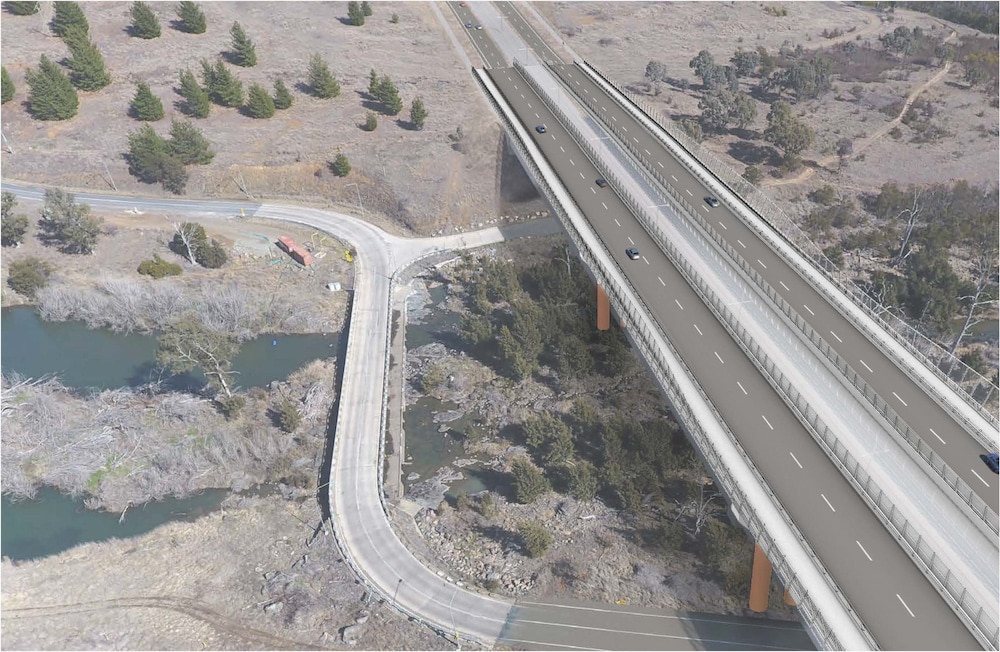Construction has begun on the first stage of works on the Molonglo River Bridge, the Australian and ACT Governments announced.
A 200-metre-long bridge will be built across the Molonglo Nature Reserve and the region’s largest river.
As well, 1.7 kilometres of new arterial roads leading to the bridge and two new intersections will be built.
The enabling works and realignment of the northern approach road to Coppins Crossing are the first stage of works to be completed.
This will allow construction vehicles and machinery to access the location where the new bridge will be built, and minimise disruption to road users during the construction period.
Construction on the main package of works will begin following this first stage of works. The bridge and road approaches are expected to open to traffic by the end of 2025.
This project is jointly funded by the Australian and ACT governments. The total project budget is $225 million. The contract was awarded to B.M.D Construction Pty Ltd last year.
“Molonglo residents have been very vocal in their support of this project, and I am sure they will be excited to see construction activities underway on site, knowing we are a step closer to delivering the necessary infrastructure this region needs,” Tara Cheyne, ACT Minister for City Services, said.
“We will work with the contractor to ensure Coppins Crossing remains open as much as possible as the built is being built. I look forward to keeping the community updated and sharing more information about the construction programming as works continue.”
Politicians say the bridge will connect the suburb of Whitlam and future northern Molonglo Valley suburbs to the rest of the Molonglo Valley, including the future Molonglo Group Centre.
The project also includes active travel links such as off-road shared paths and a pedestrian underpass.
The road network can support a future light rail connection.
Two new bus stops and two queue-jump bus lanes will be built.
The project provides habitat for native fauna such as platypuses, pink-tailed worm lizards, water birds, and bats.
For more details on this project, visit www.builtforcbr.act.gov.au.



